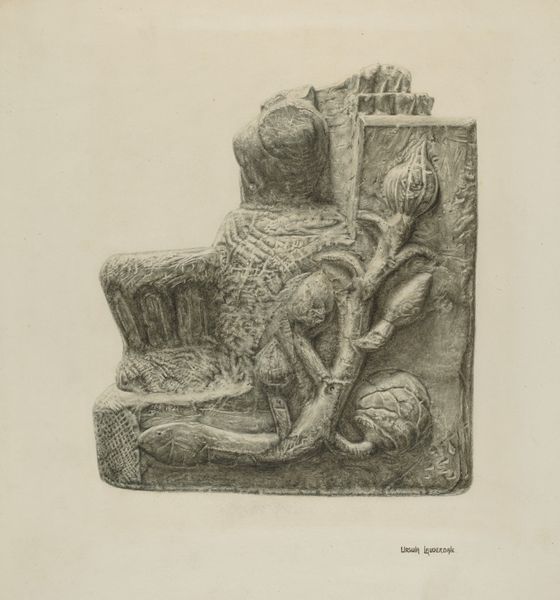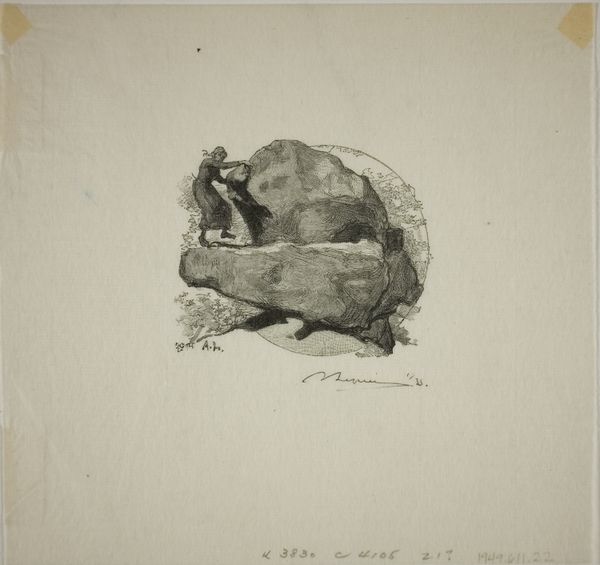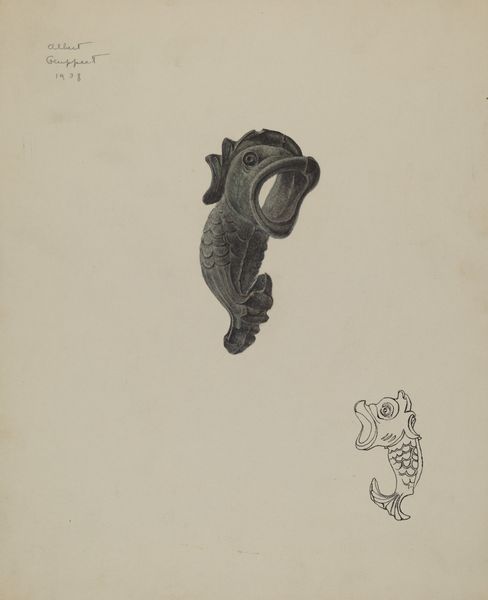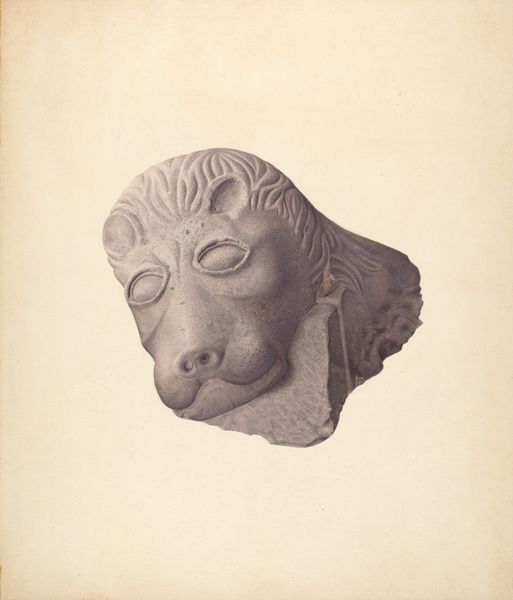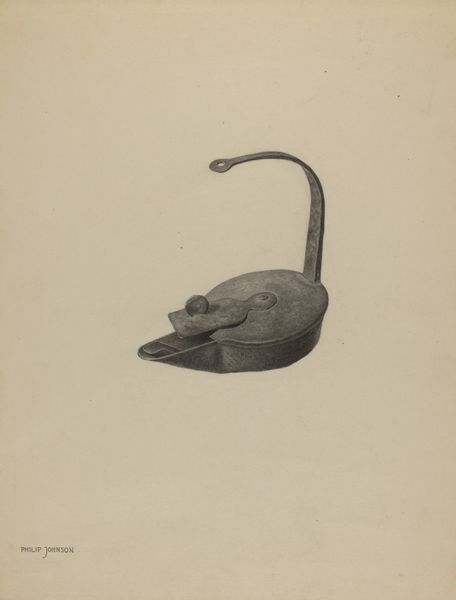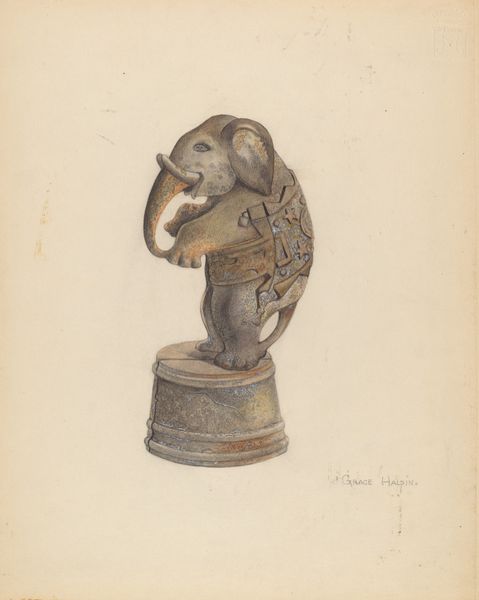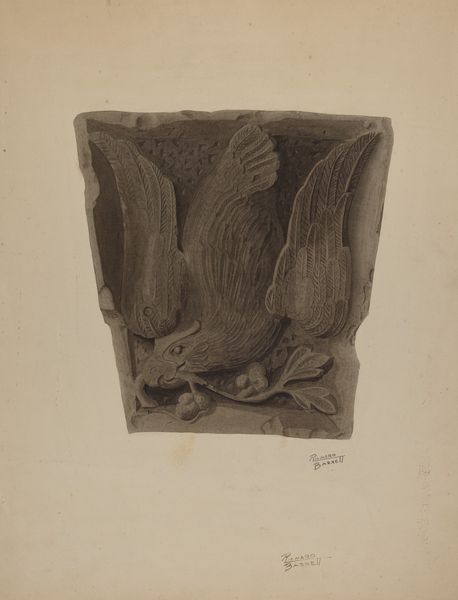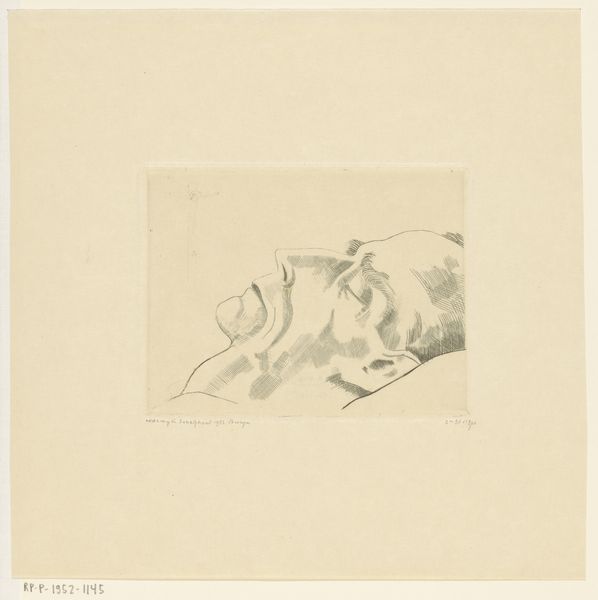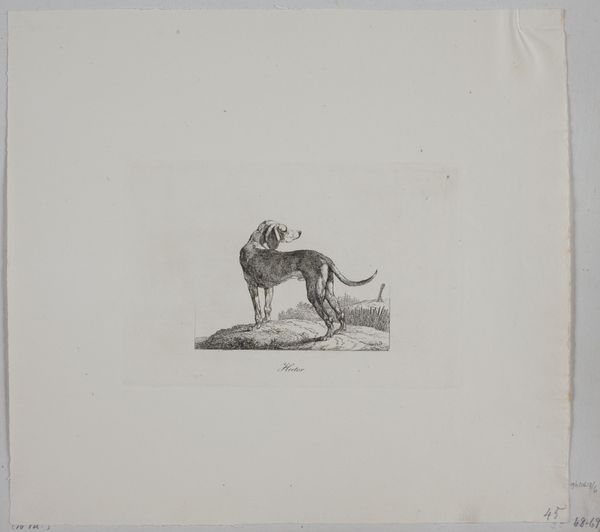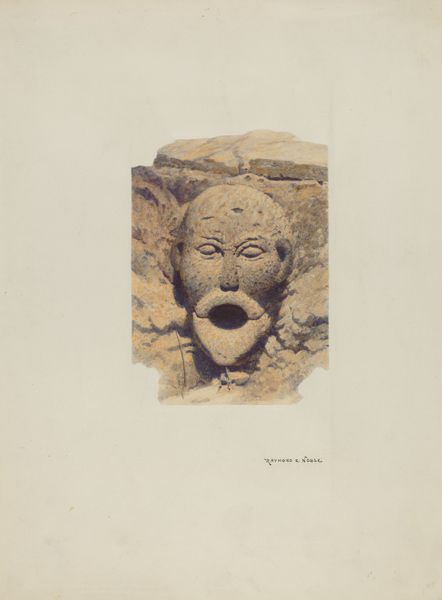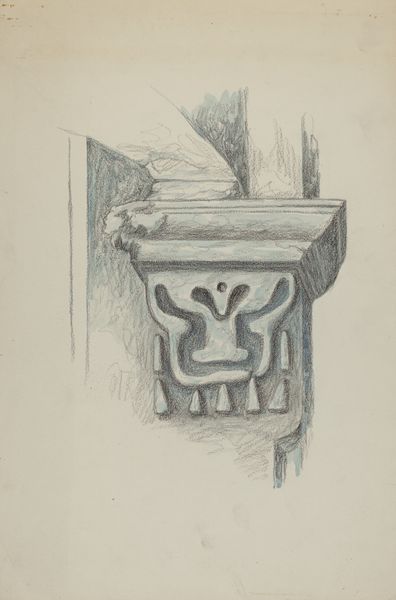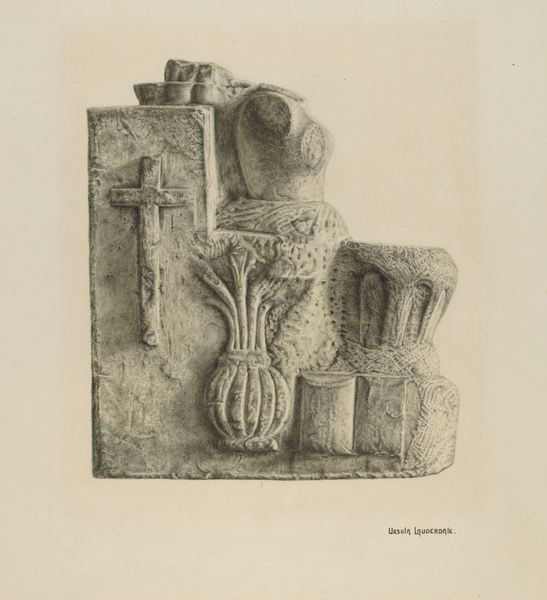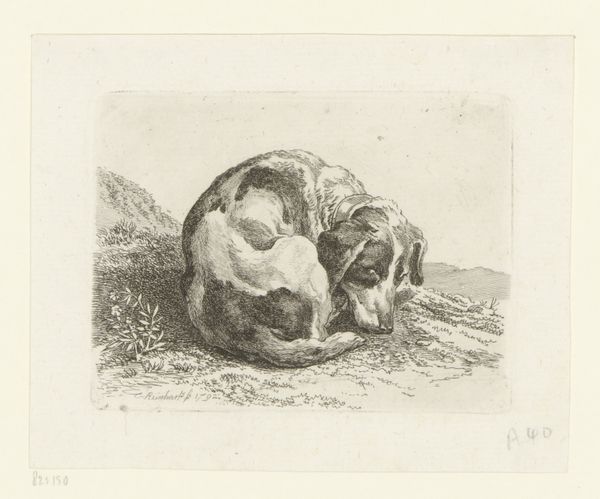
drawing, watercolor
#
drawing
#
landscape
#
watercolor
#
watercolor
#
realism
Dimensions: overall: 35.5 x 26.7 cm (14 x 10 1/2 in.) Original IAD Object: Fig: 18"x18"x24"
Copyright: National Gallery of Art: CC0 1.0
Curator: This watercolor drawing, entitled "Water Spout, Sandstone," was rendered by Raymond E. Noble in 1939. It offers a striking depiction of architectural detail. Editor: My initial reaction is... melancholic. The subject itself feels a bit weighed down, doesn't it? And the palette really contributes to that somber mood, muted browns and grays mostly. Curator: Absolutely. Let’s consider what a water spout traditionally symbolizes: provision, cleansing, and the life-giving properties of water itself. Yet, in Noble's depiction, there is an almost statuesque stillness that removes the object from its typical functional and symbolic context. Editor: Right, it’s frozen, rendered silent. It makes me think of how infrastructure—particularly water access—isn't equally distributed. So while this spout maybe represents the potential for abundance, there’s a tangible stillness implying broken systems. I wonder, was this created during the Dust Bowl era or anything? Curator: Actually, yes. 1939 was toward the tail end of that incredibly challenging time. We can really read that scarcity and that arrested potential into the piece through this sociohistorical lens, don't you think? Also, it's worth considering that during the New Deal era, many artists created art documenting different regions of America—sometimes for conservation projects. Perhaps that's part of this piece. Editor: Ah, so almost a visual inventory or a portrait documenting part of a drought-stricken area, which also would've impacted social structures as some populations moved due to harsh climate, as the landscape began to shift. Curator: It prompts contemplation about both material substance and social equity; the solidity of sandstone versus the fragility of human survival amidst environmental disaster. Thank you for bringing those considerations to this piece, I wouldn't have seen them at first! Editor: And thank you for grounding us with the artist's background, it allows for richer insight.
Comments
No comments
Be the first to comment and join the conversation on the ultimate creative platform.
